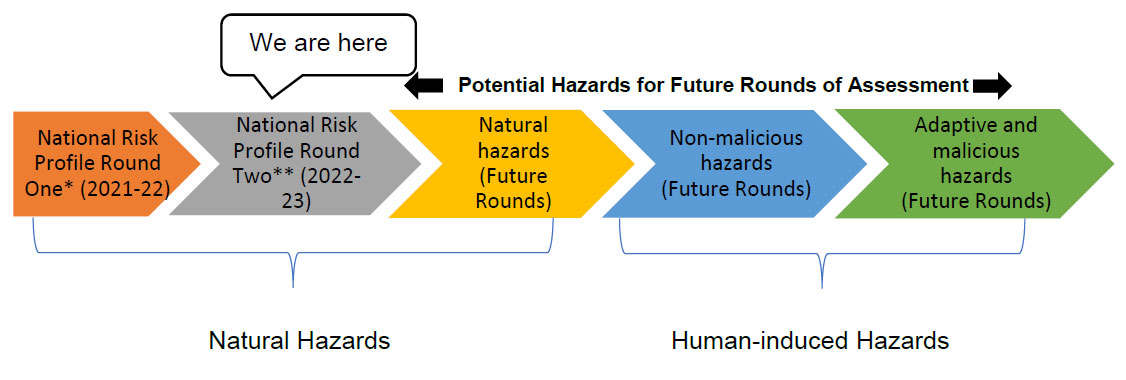Backgrounder: Future of the National Risk Profile
Canada is affected by many different types of disasters. These events can cause significant health, infrastructure, environmental, economic and social damage, with greater impacts on vulnerable populations. Building resilience to, and reducing the impact of disasters requires a proactive approach based on a clear understanding of risk and an up-to-date picture of the capacity of the national emergency management system.
This is why Canada's National Risk Profile takes a phased, all-hazards approach. The second round of research has begun, and is focused on heat events, hurricanes, and space weather. Planning for the third round is also underway. The National Risk Profile will continue to evolve and expand to assess a wide range of natural hazards and accidental and malicious human-induced hazards, such as chemical leaks or cyber-attacks, and to provide data on the current state and desired state of our emergency management capabilities. The goal is to establish a comprehensive evidence base that supports strategic decision-making across all hazards, and helps Canadians protect themselves and their communities in the event of a disaster.
National Risk Profile Research Phases

* Earthquakes , Floods, Wildland Fires
**Heat Events, Hurricanes, Space Weather
Image description
This image shows the current and future phases of National Risk Profile research as a series of coloured arrows proceeding from left to right across the page. It starts with Round 1 research, the results of which, on earthquakes, wildland fires and floods, are shared in the report. Then, round 2 will focus on heat events, hurricanes and space weather. That is the research currently underway. After that there are three categories of possible hazards for future rounds of assessment: additional natural hazards, non-malicious human-induced hazards and adaptive and malicious human induced hazards.
The National Risk Profile's evolving research process
Lessons learned during each phase of the National Risk Profile will be constantly incorporated into the all-hazards approach. Feedback heard during round one, which informed the evidence base for this first public report, has been used to refine round two. The definitions of disaster impacts have been updated for round two to better capture the nuanced ways that disasters affect Canadians like, for example, mental health impacts. Existing knowledge and expertise within the Government of Canada will continue to be complemented by input from experts across the country, who reflect the diversity of the country with respect to knowledge, experience and expertise.
An important area of focus for future rounds, and subject to decision-making, will be using innovative methods to incorporate the realities and lived experiences of more diverse groups of Canadians. Technical risk assessments, using traditional scientific methods, will be complemented by narrative-based evidence. Indigenous knowledge and Indigenous leadership on climate change adaptation will be further utilized and leveraged to inform a holistic, broad and national understanding of risk. A broader range of trends – such as population growth, urbanization, and increasing reliance on technology – will be incorporated to better understand the future of risk. Capability assessments allowing the assessment of more capabilities will also be developed and used within the framework of the National Risk Profile.
By continuously incorporating lessons learned into our research, we will ensure that the National Risk Profile is an up-to-date awareness tool for all Canadians and that we continue to provide national evidence that helps identify disaster risks and inform the priorities needed to bolster our existing emergency management system to best respond to future events.
- Date modified: